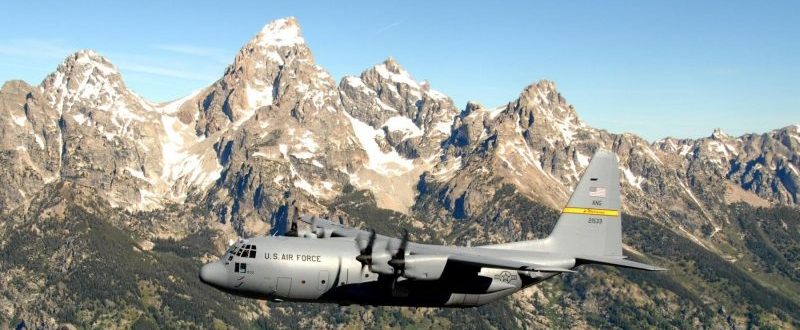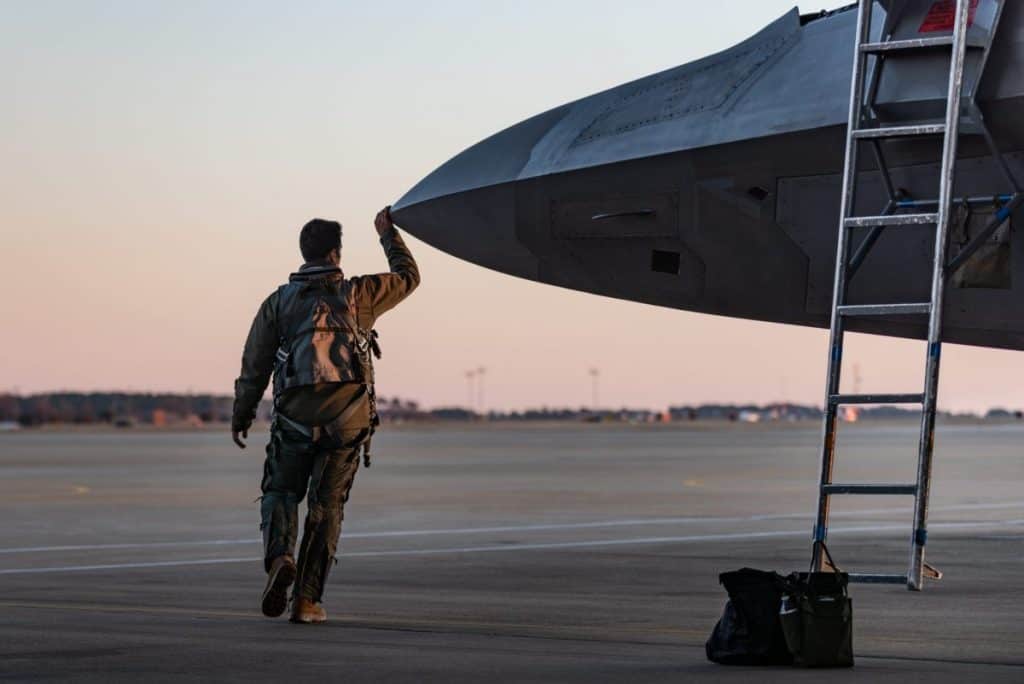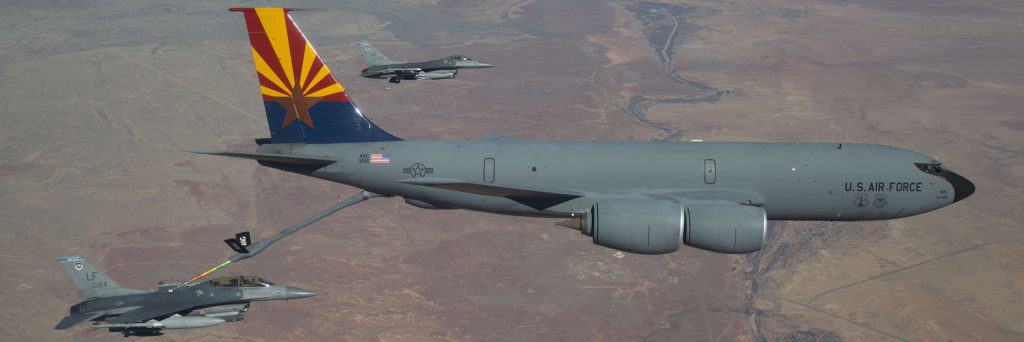Fighting Forest Fires From the Cockpit of a C-130 – Wyoming ANG

Many jobs in this world are just that...jobs. Thankfully, aviation gives us a lot of opportunities that amount to far more than jobs. They’re missions, callings, and perhaps even adventures. I recently got to speak with an old Air Force buddy, Major Jeremy “Hefty” Atherton, and Major Donny Salamone, the Chief of Pilot Hiring for the Wyoming Air National Guard’s 153rd Airlift Wing. If you want to live in one of the greatest locations on the planet and do some flying that absolutely qualifies as a calling, then the 153 AW could be the perfect place for you.
Quick disclaimer: This post contains several expressions of individual opinion. Those opinions are mine and not necessarily those of the people I interviewed. If you don’t like one of those opinions you’ll have to hold me responsible and not Hefty or Donny.

Table of Contents
The Unit, Missions, and Aircraft
The Wyoming ANG has 8 x C-130Hs on their ramp in Cheyenne. (The dual-use airport, KCYS, not nearby FE Warren AFB.) They’re responsible for a standard Air National Guard C-130 tactical airlift mission, but they also get to use special systems for a unique and exciting mission. The 153 AW is one of only four units in the country that gets to use the Modular Airborne Fire Fighting System (MAFFS) to fight wildfires.
The MAFFS mission is actually run by the US Forest Service (USFS) which coordinates where and when the 153rd’s aircraft fly. Federal regulations require the USFS to use civilian contract firefighting aircraft whenever possible. However, there is never enough to go around, and aircrews from Cheyenne, Reno, Colorado Springs, and California’s Channel Islands spend their summers fighting fires.
Three of the USAF’s four MAFFS squadrons fly C-130H models, while only one has the newer C-130J variant. However, the WY ANG’s H-models get some special upgrades to make them more capable while flying low-level through the mountains of America’s west during the hottest part of the year. Their aircraft are all getting the UTC Aerospace Systems NP 2000 8-bladed propeller upgrade, and the Rolls-Royce T56 Series 3.5 engine upgrade.

Many Guard and Reserve units have spent years or decades doing a mission they love only to be assigned a new aircraft and mission with little notice. In far too many cases, they lose their crewed aircraft and get assigned to fly drones. The fact that the 153 AW has such a unique mission and such a unique aircraft means that the chances of getting reassigned to something undesirable are much lower than most.

The MAFFS system is impressively modular. It can be rolled onto the aircraft and fully set up in about a day. The fire retardant exits the aircraft through one of the aft doorways. This gives their aircraft the versatility of fighting fires, performing the C-130’s everyday tactical airlift mission, and reconfiguring for aeromedical evacuation as well. (The 153 AW includes the 187th Aeromedical Evacuation Squadron [AES] which works very closely with the C-130 squadrons in Cheyenne. You can check out their Flickr page to get an idea of what they do.)
The MAFFS mission is very demanding. It requires flying the C-130 in ways that most pilots will never get to. It’s not something taken lightly, which is why it takes a MAFFS Instructor Pilot like Donny 12 years to “grow” a new MAFFS Instructor Pilot. (More about that process shortly.)
Some Guard and Reserve units can be temporary homes for pilots, but the MAFFS mission doesn’t allow for that. When the 153rd hires you, they’re expecting you to stay for the long-term.
The C-130 has a lot of flying events to keep current on, and adding the MAFFS mission on top of that makes things even more demanding. However, Donny and Hefty both feel like their unit is exceptionally good at helping people find balance in life.
Donny spent nearly 10 years as a “Guard Bum”...essentially making the Guard his primary job by picking up individual workdays despite being assigned as a traditional, part-time Guardsman. He flew 2-3 times per week and did at least one off-station trip per month.
On the low end, it’s possible for an experienced C-130 pilot to log all of his or her currency “beans” by flying 2-3 times per month. An inexperienced C-130 pilot would need at least 3-4 flights per month. The 153 AW has experienced pilots who also fly for United, Delta, American, Southwest, and Frontier. Some of their newer pilots fly for regional airlines. They’re also working on getting a simulator on base (they’ve already constructed the building). This should make it easier to log those hard-to-get beans.
If you’re not interested in airline flying, being a MAFFS pilot opens up unique opportunities. The aerial firefighting community is small and tight-knit. Civilian outfits are always looking for pilots with experience and skill. Several of the 153rd’s pilots fly as civilian firefighters for their day jobs, and then go do the same thing with the military. (Some of them fly in the US all summer, then go somewhere like Australia to fly all winter.) If you’re looking for a life of adventure, it would be tough to beat swapping back and forth between a C-130 and an OV-10. (For the record, all of the 153rd’s pilots who have firefighting day-jobs fly aircraft other than the OV-10. Hefty sent me this picture from a tour he got one-day sitting alert. I included it here because it’s just such an awesome airplane.)

Another reason that it’s easy to find balance in the 153rd is that it’s a great group of people in a great place. Although the unit belongs to the Wyoming ANG, Cheyenne isn’t far from the Colorado border. The 153rd realizes that their state only has so many pilots to choose from. Members of the unit live as far east as Nebraska, and many of the pilots actually live in Northern Colorado.
I grew up in that area, and it’s fantastic. What more could you ask for than Rocky Mountain National Park, Beau Jo’s pizza, and the New Belgium Brewing Company? Fort Collins, Loveland, Boulder, or Longmont are all easy drives to both Cheyenne for Guard duty and Denver International for airline trips.
I’m biased because I grew up in Colorado, but Wyoming has plenty of great areas too. I’ve canoed and fished down the North Platte river, hiked in gorgeous mountains near Laramie, and enjoyed good times in Casper and Cheyenne. The Grand Tetons offer epic hiking, and I still need to get to Jackson Hole.
The unit will also hire people who live in other parts of Northern Colorado. They realize that a lot of people, especially USAF Academy grads, want to settle down in the Colorado Springs area. Although the 153rd agrees that the Springs is a great area, they feel that it’s too far to commute to Cheyenne and they’ll politely ask that you apply to the 302 AW located at Peterson AFB if you’re dead-set on living south of Denver. The 302nd also flies C-130s and they’re one of the other three squadrons that participate in the MAFFS mission.
Since the 153rd tends to hold onto people for a long time, everyone knows each other. The MAFFS mission tends to attract pilots who are passionate about their mission and aviation in general. Everyone is close enough that it’s easy to know who can handle a trip or deployment and who needs to take a break. The leadership supports this mentality and it makes for a great place to serve.
While most of the pilots in the squadron serve part-time as “Traditional Guardsmen,” there are some opportunities for full-time orders. There are a lot of technician positions that become available sporadically throughout the year. When Active Guard and Reserve (AGR) orders become available they’re generally offered to current technicians first. (Big Air Force has recently started converting a few full-time positions from technician to AGR spots. Unfortunately, this hasn’t been as widespread as any of us expected. I personally hope that the Air Force realizes the benefit of putting people on AGR orders and offers more of these slots in the future.) In general, these full-time jobs all come with ground duties in addition to flying. For example, you might work as an executive officer, Wing plans, safety, etc.
Daily Life
The wing as a whole does a lot of flying. They launch two 2-ship formations every Tuesday and Thursday for tac missions (low-level, assault landings, airdrops, etc). Wednesdays are usually one day and one night proficiency sortie focused on practicing takeoffs, landings, and instrument approaches. Drill weekends usually kick-off with a 3-ship formation on Friday night. Saturdays are for ground training and catching up with friends. Sundays usually also launch a 3-ship formation, though one aircraft is usually designated as a training platform for the 187th AES and it may break off from the rest of the group to focus on their requirements.
Mission planning for these flights is thorough, but since the 153rd has been in the same place for a long time, and since the Herk doesn’t fly fast enough to get that far in 2.5 - 4.0 hours, they don’t have to reinvent the wheel every time they go. For a proficiency flight, crews show about 2 hours before scheduled takeoff for mission prep. Since tactical missions are more involved, they show about 3 hours before takeoff. This includes preparing low-level charts, and a formation briefing in addition to the standard crew briefing. Night tac missions include an extra half-hour or so for checking out and preparing Night Vision Goggles (NVGs).
The 153rd is on an 18-month Air Expeditionary Force (AEF) deployment cycle, though that flexes based on real-world needs. (During summer months when the threat of fire is high, our country’s four MAFFS-capable squadrons need to be located in the US.) They returned from their last deployment in March 2018, and are getting ready to go again in February 2020. They deploy for 120 days at a time and always start the staffing process by asking for volunteers for either the first half, the second half, or the whole deployment. It’s the type of unit where everyone wants to be a part of the mission and they’re able to fill their roster with volunteers. (Well, Donny admits that once in the last 17 years they’ve had to hand out a single non-voluntary deployment assignment. That’s pretty impressive for any military unit, and a testament to the fact that they have a great group of people who are focused on getting the mission done!)
If you’re interested, they also have access to 45-180 day non-flying orders to Ramstein AFB, Germany. The USAF Reserve and ANG C-130 communities are essentially tasked to staff a C-130 detachment at the base full-time in support of a mission called Silver Arrow. The people on non-flying orders run the detachment, and the longer orders give them good continuity. This allows the WY ANG, and most other Guard/Reserve C-130 units, to select 2-4 week TDYs to provide airlift support for the Silver Arrow Detachment, throughout Europe.
There is also a possibility for some overseas voluntary non-flying assignments at the USAFE Air Operations Center (AOC) at Ramstein, or with their sister country in Tunisia. Both of these are great opportunities later in your career, after becoming proficient in the C-130 mission. If you’re interested in taking your family somewhere interesting for 6-12 months, while earning a bunch of retirement points, this could be a great opportunity.
Although the AEF deployment is a big deal, the 153rd really earns its keep during fire season. They tend to get assigned to fly all over the western US, though they’ve spent a lot of time in California over the past few years.
For these missions, they typically assign individuals to 7-day rotations. You could potentially stay out longer if you wanted to, but they’ve found that this is the right amount of time. (When you’re busy, 7 days in a row of this type of flying will wear you out. Ironically, when things are slow, 7 days of sitting around on alert also wears you out.)
These rotations take you to a tanker base at an airfield somewhere near the fires. The crews are essentially on alert from 8:00 am (sunrise-ish) until sunset. The Air Force tends to operate with a larger footprint than lean civilian companies, and there aren’t always air conditioned facilities big enough to fit everyone. This means some days spent hanging around in camp chairs under the shadow of your own wing. If this sounds miserable, this isn’t the job for you. If it sounds like a small sacrifice to make to be able to take part in this mission, and a great excuse to get out of tiling yet another bathroom for the week, you’ll find ways to enjoy that time.








